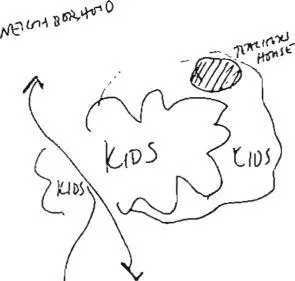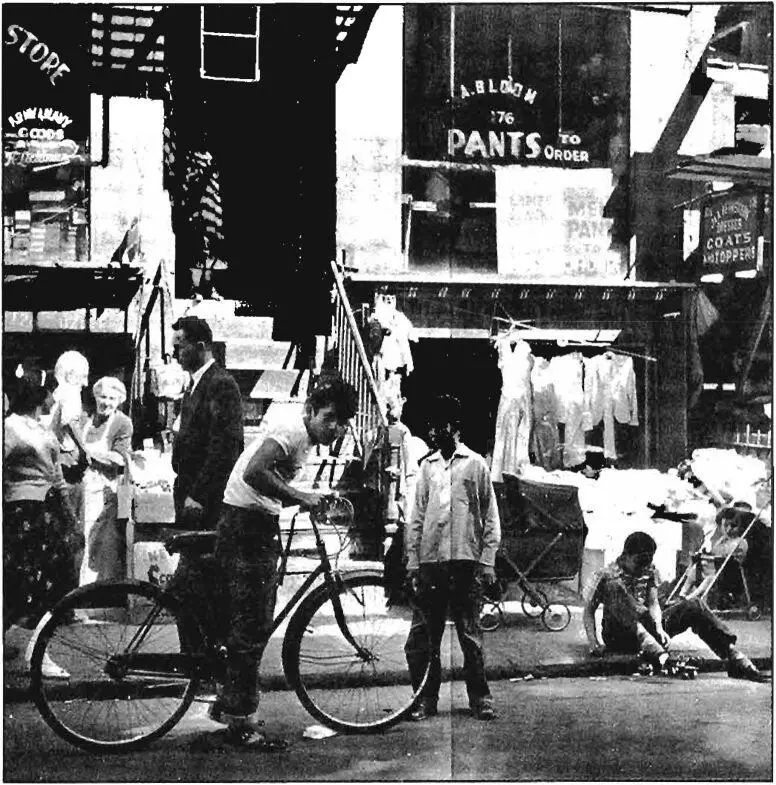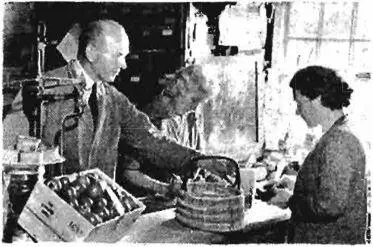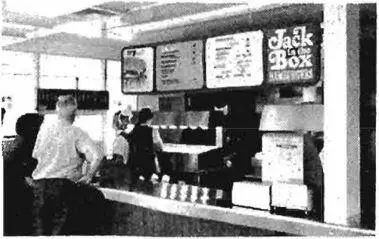Christopher alexander - A pattern language
Здесь есть возможность читать онлайн «Christopher alexander - A pattern language» весь текст электронной книги совершенно бесплатно (целиком полную версию без сокращений). В некоторых случаях можно слушать аудио, скачать через торрент в формате fb2 и присутствует краткое содержание. Жанр: Прочая научная литература, на английском языке. Описание произведения, (предисловие) а так же отзывы посетителей доступны на портале библиотеки ЛибКат.
- Название:A pattern language
- Автор:
- Жанр:
- Год:неизвестен
- ISBN:нет данных
- Рейтинг книги:3 / 5. Голосов: 1
-
Избранное:Добавить в избранное
- Отзывы:
-
Ваша оценка:
- 60
- 1
- 2
- 3
- 4
- 5
A pattern language: краткое содержание, описание и аннотация
Предлагаем к чтению аннотацию, описание, краткое содержание или предисловие (зависит от того, что написал сам автор книги «A pattern language»). Если вы не нашли необходимую информацию о книге — напишите в комментариях, мы постараемся отыскать её.
A pattern language — читать онлайн бесплатно полную книгу (весь текст) целиком
Ниже представлен текст книги, разбитый по страницам. Система сохранения места последней прочитанной страницы, позволяет с удобством читать онлайн бесплатно книгу «A pattern language», без необходимости каждый раз заново искать на чём Вы остановились. Поставьте закладку, и сможете в любой момент перейти на страницу, на которой закончили чтение.
Интервал:
Закладка:
However, as this kind of family has gradually disappeared, we have continued to hold fast to the idea that child-raising is the job of the family alone, especially the mother. But it is no longer viable. Here is Philip Slater discussing the difficulties that beset a small nuclear family focussing its attention on one or two children:
The new parents may not be as absorbed in material possessions and occupational self-aggrandizement as their own parents were. They may channel their parental vanity into different spheres, pushing their children to be brilliant artists, thinkers, and performers. But the hard narcissistic core on which the old culture was based will not be dissolved until the parent-child relationship itself is dein-tensified. . . .
Breaking the pattern means establishing communities in which (a) children are not socialized exclusively by their parents, (b) parents have lives of their own and do not live vicariously through their children (The Pursuit of Loneliness , Boston: Beacon Press, 1971, pp.1+1-42).
The children’s home we propose is a place which “de-intensi-fies the parent-child relationship” by bringing the child into authentic social relationships with several other adults and many other children.
1. Physically, it is a very large, rambling home, with a good-sized yard.
2. The house is within walking distance of the children’s own homes. Terence Lee was found that young children who walk or bike to school learn more than those who go by bus or car. The mechanism is simple and startling. The children who walk or bike, remain in contact with the ground, and are therefore able to create a cognitive map which includes both home and school. The children who are taken by car, are whisked, as if by magic carpet, from one place to the other, and cannot maintain any cognitive map which includes both home and school. To all intents and purposes they feel lost when they are at school; they are perhaps even afraid that they have lost their mothers. (T. R. Lee, “On the relation between the school journey and social and emo-
86 children’s home
tional adjustment in rural infant children,” British Journal of Educational Psychology , 27:101, 1957.)
3. There is a core staff of two or three adults who manage the home; and at least one of them, preferably more, actually lives there. In effect, it is the real home of some people; it does not close down at night.
4. Parents and their children join a particular home. And then the children may come and stay there at any time, for an hour, an afternoon, sometimes for long overnight stays.
5. Payment might be made by the hour to begin with. If we assume $1 per hour as a base fee, and assume that a child might spend 20 hours a week there, the house needs about 30 member children to generate a monthly income of about $2500.
6. The home focuses on raising children in a big extended family setting. For example, the home might be the center of a local coffee klatch, where a few people meet every day and mix with the children.
7. In line with this atmosphere, the home itself should be relatively open, with a public path passing across the site. Silver-stein has indicated that the child’s sense of his first school being “separate” from society can be reduced if the play areas of the children’s home are open to all passing adults and to all passing children. (Murray Silverstein, “The Child’s Urban Environment,” Proceedings of the Seventy-First National Convention of the Congress of Parents and Teachers, Chicago, Illinois, 1967,
PP- 39-45-)
8. To keep the young children safe, and to make it possible to give them this great freedom without losing track of them altogether, the play areas may be sunk slightly, and surrounded by a low wall. If the wall is at seat height, it will encourage people to sit on it—giving them a place from which to watch the children playing, and the children a chance to talk to passers-by.
The children’s home pattern has been tried, successfully, in a far more extreme form than we imagine here, in many kibbutzim where children are raised in collective nurseries, and merely visit their parents for a few hours per week. The fact that this very extreme version has been successful should remove any doubts about the workability of the much milder version which we are proposing.
Therefore:
TOWNS
| walk-through |  |
open 24 hours live-in teacher |
| AAT fri-t Hart i-m u |
In every neighborhood, build a children’s home—a second home for children—a large rambling house or workplace—a place where children can stay for an hour or two, or for a week. At least one of the people who run it must live on the premises; it must be open 24 hours a day; open to children of all ages; and it must be clear, from the way that it is run, that it is a second family for the children —not just a place where baby-sitting is available.
children of all ages
• • •
... %.
Treat the building as a collection of small connected buildings —building complex (95) ; lay an important neighborhood path right through the building, so that children who are not a part of the school can see and get to know it by meeting the children who are—building thoroughfare (ioi) ; attach it to the local adventure PLAYGROUND (73); make the teachers’ house an integral part of the interior—your own home (79)5 and treat the common space itself as the hearth of a larger family—the family (75), COMMON AREAS AT THE HEART (l 29) . . . .
430
| the Local shofs and gathering flaces | |
|---|---|
| 00 | INDIVIDUALLY OWNED SHOPS |
| 88. | STREET CAFE |
| 00 | CORNER GROCERY |
| 90. | BEER HALL |
| 91. | traveler’s INN |
| 92. | BUS STOP |
| 93- | FOOD STANDS |
| 94. | SLEEPING IN PUBLIC |
43i
87 INDIVIDUALLY OWNED
SHOPS**

432
. . . the street cafe (88) and corner grocery (89) and all the individual shops and stalls in shopping streets (32) and markets of many shops (46) must be supported by an ordinance which guarantees that they will stay in local private hands, and not be owned by absentee landlords, or chain stores, or giant franchise operations.
When shops are too large, or controlled by absentee owners, they become plastic, bland, and abstract.
The profit motive creates a tendency for shops to become larger. But the larger they become, the less personal their service is, and the harder it is for other small shops to survive. Soon, the shops in the economy are almost entirely controlled by chain stores and franchises.
 |
| Shop run as a way of life. |
 |
| Shop run for money alone. |
The franchises are doubly vicious. They create the image of individual ownership; they give a man who doesn’t have enough capital to start his own store the chance to run a store that seems like his; and they spread like wildfire. But they create even more plastic, bland, and abstract services. The individual managers have almost no control over the goods they sell, the food they serve; policies are tightly controlled; the personal quality of individually owned shops is altogether broken down.
Читать дальшеИнтервал:
Закладка:
Похожие книги на «A pattern language»
Представляем Вашему вниманию похожие книги на «A pattern language» списком для выбора. Мы отобрали схожую по названию и смыслу литературу в надежде предоставить читателям больше вариантов отыскать новые, интересные, ещё непрочитанные произведения.
Обсуждение, отзывы о книге «A pattern language» и просто собственные мнения читателей. Оставьте ваши комментарии, напишите, что Вы думаете о произведении, его смысле или главных героях. Укажите что конкретно понравилось, а что нет, и почему Вы так считаете.












